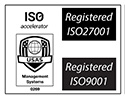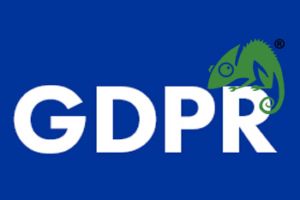Google AdWords Management Pros and Cons
AdWords is a PPC (Pay Per Click) marketing system from Google. It allows websites to pay to be placed in page 1 of Google and works on a bidding system due to the amount of competition for keywords. If a visitor clicks on the paid advertisement, the website is charged for this click. AdWords is a very popular way in which websites advertise themselves on the web, but like any marketing campaign, it has its pros and cons.
Pros
As you do not have to wait for rankings to be recognised as in organic SEO, AdWords is an instant way of being shown on page 1 or Google search results. This means that as soon as the advert is placed you can expect to see increased traffic for your chosen search terms.
The traffic that will be reaching your website will also be targeted. This is because you can choose which search terms you would like to show for, and which ones you would not, meaning that the user will have typed in the specific keywords that you believe relate to your site in order for them to find you. This increases the chance of visitors remaining on your website as it will be relevant to what they are looking for, therefore chances of making a sale are greatly improved.
Even though websites are charged for the ‘click’ if they receive traffic via their AdWords advertisement on Google, ultimately the scheme is designed to be cost effective. This is because it works on a bidding scheme; you bid for how much you are willing to pay per click. Google takes into account the quality and relevance of your website and gives this a quality score which helps reduce the cost that you pay per click; Google do this to ensure that the adverts displayed are relevant; users have a good experience and use Google again.
The actual cost per click is calculated by a multi-step process. Firstly, your advert including the title, description and the landing page that it links to are given a quality score; the higher the better. Once you have set your maximum bid for the terms required this is multiplied by your quality score to give your ‘Ad Rank’. The bidder with the highest Ad Rank wins the auction and so is displayed top of AdWords in the Google search results pages. Many people automatically assume that the highest bidder will win the auction, but this is not the case; quality score has a big effect upon the outcome.
| Quality Score Max | Max. Cost per Click (£) | Ad Rank | |
| Company 1 | 1 | 1.00 | 1.0 |
| Company 2 | 3 | 0.45 | 1.35 |
| Company 3 | 2 | 0.60 | 1.2 |
As you can see from this example, Company 3 offered the lowest maximum bid, but due to the high quality score the company still won the bid because the Ad Rank was the highest. This is not the end of the calculation though; Company 3 will not need to pay as much as £0.45 per click.
The winning bidder only needs to pay 1p above what is needed to maintain their Ad Rank above the next highest bidder. In this case, Company 3 would only need to pay £0.41 per click. This calculation continues down the ranks to calculate each bidders cost per click.
The fact that you pay a relatively small amount for targeted traffic that is likely to lead to a sale is why Google AdWords can be so cost efficient; a 41p click may end with a £100 sale.
The importance of the quality score for your advert is paramount, and this should drive you to improve your website overall as the landing pages need to be perfect in order to help drive up the quality score. Improving the quality and content of your website means that when visitors enter it, they will have a positive experience and are more likely to return. It also helps with organic rankings, aiding any organic SEO you may be doing to coincide with AdWords.
Cons
One of the biggest cons of AdWords is the amount of time and effort that needs to go into managing the campaign in order to make it a success. When an AdWords campaign is first begun, it has to be run on a trial and error basis whilst you learn which terms work and which do not in terms of click through rate and conversion rate. This initially takes a lot of time and effort as the keywords need to be closely monitored and analysed to ensure that the ones which are converting to sales are set at the appropriate bidding price, and those which are costing money but not converting are removed. It is possible to initially lose money with AdWords as it can take a while to get the bid and keyword balance correct.
Using Google AdWords is not always the most cost effective method of marketing your website. This is because even with high conversion rates and a positive profit margin, you could still be spending hundreds of pounds each day in order to appear in Google page 1 for your keywords. Therefore, your overall profit is reduced. It is also worth considering that if you stop paying for Google AdWords, then your advert will no longer appear in search results, potentially causing sales to slow significantly or stop altogether.
It is clear that there are two sides to using Google AdWords; the positive and the negative. Having your website appear on page 1 of Google search engine results is invaluable in terms of increasing traffic to your website; however this can be costly using only AdWords. An ideal solution is to concentrate 30% of your marketing budget on AdWords, and the remaining 70% on organic SEO. This means that you will appear immediately on page 1 and so begin to make sales, whilst your organic SEO campaign is running to put you on to page 1 for free in the long term.








